After frosts, chestnuts are down, but not out
A few chestnut farms in southern Michigan and many in northern Michigan remain undamaged after recent frosts.
In 2010, after an extremely damaging mid-May frost took out most chestnut production, growers were heart-broken (Photo 1). This came on the heels of a wet and cool summer of 2009 that taught chestnut growers that chestnuts required warm, dry temperatures for successful pollination for subsequent good yields. However, all was forgiven and maybe forgotten when chestnut production records were shattered in 2011. Now in 2012, we return back to the days of frost – but not so fast. After a survey of various chestnut farms, it appears that some orchards are still in production.
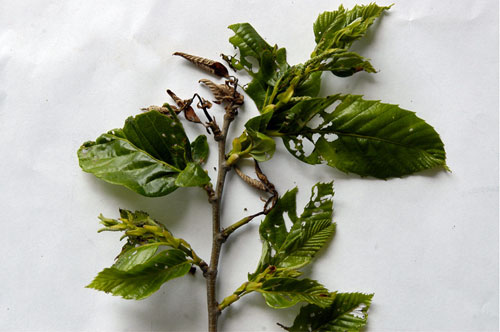
Photo 1. 2010 – Terminal
bud damage observed a couple of weeks after a
mid-May frost event. Breaking
buds did not produce female flowers and
few chestnuts were produced in Michigan
in 2010. Only orchards near
Lake Michigan produced chestnuts.
Back in the mid-1980s, when chestnuts were being touted as the new crop on the block, one of the reasons cited for planting chestnuts was that they would be resistant to frost since they flower sometime between late June and early July, times when frosts would not interfere with flowering and pollination. However, as with most things that have not been tried and tested, the words were cheap, but it ended up not being true. Chestnuts produce flowers from their terminal buds and when the terminal buds are damaged by frosts in early spring, female flower production is greatly reduced or eliminated.
By late April 2012, chestnuts had skirted around most of the early frost events. However, during the night of April 28 and morning of April 29, temperatures went down in some locations to near 20°F (Photo 2). So far, that was our last frost, and the most damaging. In southern Michigan, most chestnuts trees were fully budded out and were severely damaged (Photos 3–6).
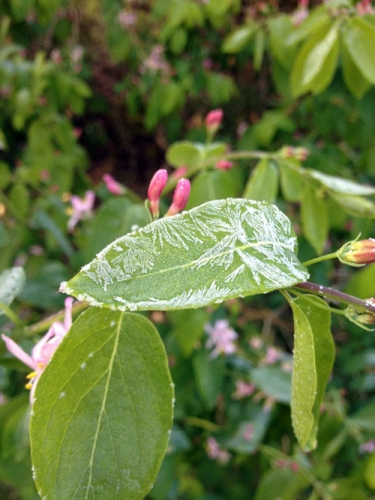
Photo 2. Frost on
honeysuckle leaves in the early morning of April 29.
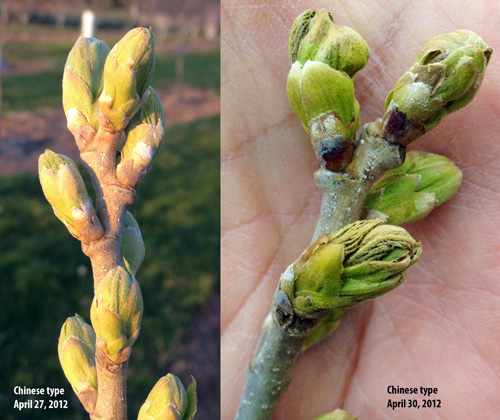
Photo 3. Frost damage on
Chinese chestnut terminal buds just after daybreak on April 29.
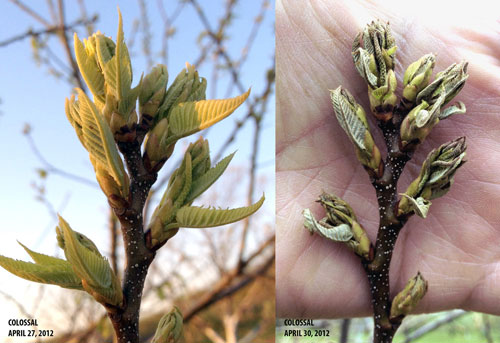
Photo 4. Frost damage on
‘Colossal’ (European X Japanese hybrid cultivar)
chestnut terminal buds just
after daybreak on April 29.
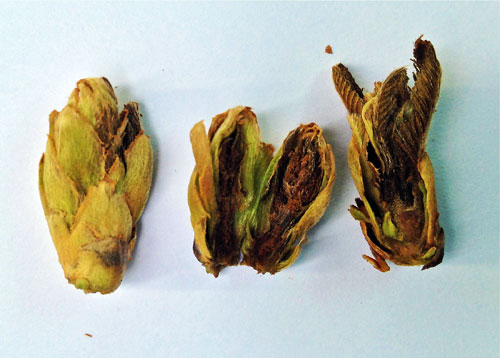
Photo 5. Dead terminal
buds checked on Chinese chestnut trees on May 2,
three days after the frost.
Photos were taken in mid-Michigan.
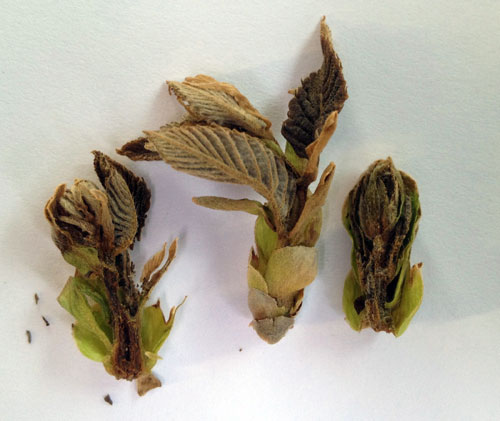
Photo 6. Dead terminal
buds checked on ‘Colossal’ on May 2, three days after
the frost. Photos were
taken in mid-Michigan.
The good news for some was that Michigan finally has orchard chestnut trees old enough and tall enough that terminal buds on the tops of trees were not damaged by the frosts (Photo 7). Trees on the tops of hills were out of harms way while trees in the low areas were severely damaged. Trees on slopes survived the early frosty morning of April 29 by virtue of their frost drainage patterns (Photo 8), and chestnut trees in orchards hugging the Lake Michigan coast (2 miles or so) demonstrated little frost damage (Photo 9). In Clarksville, Mich., the trees planted on a gentle slope were not nearly as frosted as trees planted about a half-mile away in a flat field.
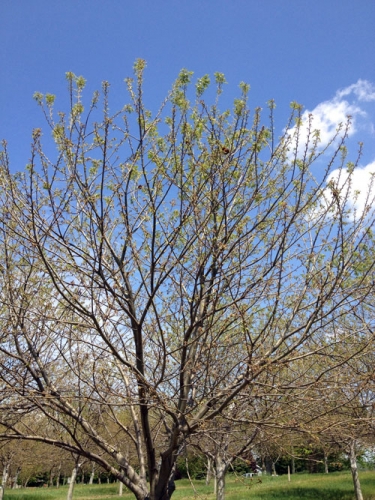
Photo 7. Some trees
escaped the frost due to their position
in the orchard. Buds on the top of this
tree survived.
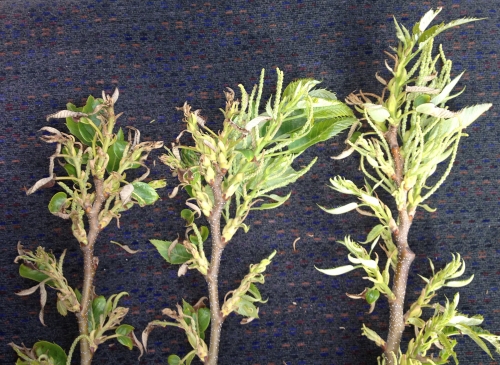
Photo 8. Three scenarios
observed in a Berrien Springs, Mich., orchard. Left,
terminal bud is dead as
are the buds surrounding it; middle, terminal bud is
dead but a lateral has
broken and continues to grow (possible female flowers
will be produced); and
right, terminal bud has not been killed and this will
probably produce female
flowers.
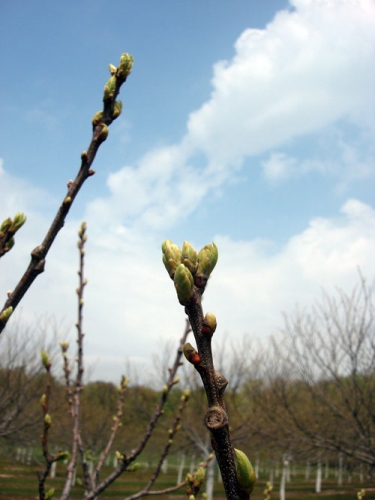
Photo 9. Healthy terminal
buds on Colossal in an orchard
about 3 miles from Lake Michigan. Most trees in
this orchard
were not harmed by the frost events of April.
Trees in northern Michigan had not apparently pushed out far enough to be damaged on April 29, the morning of the worst frost. Sometimes chestnut trees will not produce female flowers when they have experienced extremely cold temperatures even when the terminal buds are not damaged by frost, so we really cannot officially say too much other than after looking around, there will be Michigan chestnuts in 2012.
One standout performance by a new cultivar for Michigan was by a European X Japanese cultivar, ‘Bouche de Betizac.’ At the Clarksville Horticulture Research Station and at the Southwest Michigan Research and Extension Center in Benton Harbor, Mich., it was observed to be somewhat undamaged while all other cultivars were severally damaged. Terminal buds were not badly damaged and the trees were observed producing male catkin flowers (even though these are genetically sterile) as they continued to leaf out.
Dr. Fulbright’s work is funded in part by MSU’s AgBioResearch.



 Print
Print Email
Email


